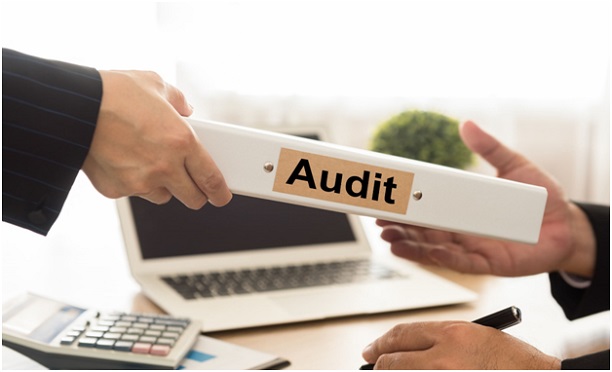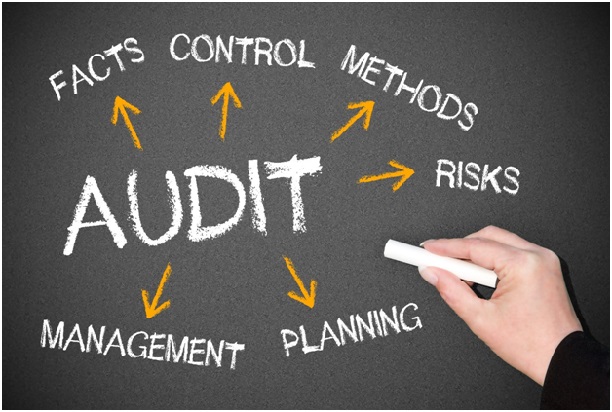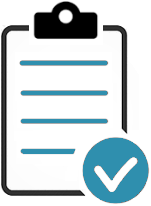Your organization should establish an internal audit programme to cover all requirements of the OH&S standard. In addition, you should ensure that consideration is given to the status and importance of the processes that comprise the audit programme and the results of previous audits.
Contents
- What is an ISO 45001 Internal Audit?
- 9.2.1 General
- 9.2.2 Internal Audit Programme
- OH&S Internal Audit Documentation Package [Template download]
- OH&S Control of Internal Auditing Procedure [Template download]
- OH&S Internal Audit Checklist [Template download]
Objective evidence should demonstrate information of concerning the effective implementation the audit programme, as well as a sample of audit results.
Our OH&S Internal Audit Procedure is proven to work.

Internal audits are most effective when conducted by persons or departments independent of the functions being audited.
Such audits should provide the accountable executive and senior management with feedback on the status of:
Some organizations cannot ensure appropriate independence of an internal audit, in such cases, they should consider engaging external auditors (e.g.; independent auditors or auditors from another organization).
It is critical that due care be taken in selecting staff to perform the role of internal auditor. Individuals who show potential as auditors should be given formal training by a registered training organization. The required level of competence of all internal auditors is maintained via refresher training or, more importantly, active participation in the audit programme.
Apart from having the appropriate training, selected staff should also possess the necessary personal qualities and attributes that enable them to act in accordance with the principles of auditing. It is strongly recommended that the internal auditors widely publish an audit programme, as it will provide a useful planning tool for key stakeholders.
Our OH&S Internal Audit Checklist is proven to work.

The internal audit process itself should cover all facets of preparing for and conducting audits based on a sound audit programme: audit scope, audit criteria, references, definitions, audit schedule, audit performance, follow-up audits, corrective action, audit documentation, audit failure and management review.
The Health and Safety Manager should ensure that internal audits are conducted by staff who do not work in the area being audited. It should be noted that the exchange of internal auditors among different organizations can be a useful process. The exchange of auditors, where possible, can also be used to enhance the value of the audit and the individual auditor’s competencies.
Planning of internal audits should take into account the safety criticality of the processes, the results of previous audits and assessments (from all sources), and the implemented safety risk controls. Internal audits should identify noncompliance with regulations and policies, processes and procedures. They should also identify system deficiencies, lack of effectiveness of safety risk controls and opportunities for improvement.
Planning of internal audits should take into account the safety criticality of the processes, the results of previous audits and assessments (from all sources), and the implemented safety risk controls. Internal audits should identify noncompliance with regulations and policies, processes and procedures. They should also identify system deficiencies, lack of effectiveness of safety risk controls and opportunities for improvement.
Assessing for compliance and effectiveness are both essential to achieving safety performance. The internal audit process can be used to determine both compliance and effectiveness.
Our OH&S Internal Audit Documentation Package is proven to work.
The following questions can be asked to assess compliance and effectiveness of each process or procedure:
In addition, internal audits should monitor progress in closing previously identified non-compliances. These should have been addressed through root-cause analysis and the development and implementation of corrective and preventive action plans.
Use an Internal Audit Programme to ensure that the ‘process names’ identified in the Process Matrix & Application form are copied into the internal audit programme.
In conjunction with Top management, the Health and Safety Manager should devise a 10-year Internal Audit Programme. When designing the audit programme, you should ensure that customer feedback, organizational changes, and risks and opportunities are brought into consideration.
The frequency of audits depends on the criticality of each process and the perceived need to audit, but all processes and areas are audited at least once every two years. Critical processes generally interact with the customer directly and are therefore audited annually, or more regularly as required. Develop the 2-year internal audit programme with specific dates and durations of each planned audit.
Workers must be included in the audit process and the development of the audit programme. Retain the audit programme and the audit results as documented information.
You should consider process status in terms of maturity and stability; a more established, proven process will be audited less frequently than a newly implemented or recently modified process and should receive a lower status score. Conversely; processes which are not performing to the planned arrangements, should be assigned a higher status score.
You should consider process importance as the degree of direct impact that process performance has on customer satisfaction; i.e., could the process provide the customer with nonconforming product? Support processes should be given a lower ranking than the manufacturing/service provision processes. In addition, the results of previous audits should be considered too. Processes that have been audited recently that have shown effectiveness and improvement should be audited less frequently.

The audit checklist is one of the many tools available from the auditor’s toolbox that helps ensure your audits address the necessary requirements.
The checklist stands as a reference point before, during and after the audit, and will provide the following benefits:
Use an Internal Audit Checklist that integrates the requirements of ISO 45001:2018 and presents them as questions.
Using this audit checklist to undertake a clause-by-clause audit works very effectively for the initial audits in preparation for implementation, gap analysis or certification. However, once your health and safety management system is implemented, your organization is expected to develop a process approach to its auditing programme.
Use a process audit report (from the internal audit procedure). It requires the auditor to review the inputs, risks, controls, activities, equipment, materials, personnel, and methods of measurement for each process. You can cross-refer the clause references in the process audit report to the internal audit checklist questions.
Our Internal Audit Checklists are proven to work.
Our templates will help you to assess the status of your existing health and safety management system and identify process weakness to allow a targeted approach to prioritizing corrective action to drive improvement.
The dashboard provides fast and reliable access to system and process metrics, precluding the need to know where all performance data is stored, or for having to locate the metrics champion for current data. It also reduces the likelihood that data is lost when metrics owners change or leave the company and reduces the learning curve for new metrics owners.
Auditors should not necessarily expect to find a documented internal audit procedure in place. However, they must be able to access documented information confirming the implementation of an audit programme by the organization.
Documented information must also be available to evidence the results of audits.
Updated: 23rd March 2023
Author: Richard Keen

Richard is our Compliance Director, responsible for content & product development.
But most importantly he is ISO's biggest fanboy and a true evangelist of the standards.
Learn more about Richard

Don’t Try to Manage It All Alone!
Our ISO Auditors and OH&S Trainers have been in this industry for years, and since 2002 we’ve been providing thousands of small businesses and large corporations with the tools they need to get certified.
Instead of trying to create everything you need to follow this process from scratch, use ours. We have procedures, templates, checklists, process maps, forms and gap analysis tools to help you control your documented information without missing a single input or output.
Before you invest all the hours reinventing the wheel, before you spend countless dollars outsourcing the task — try our templates.
| Standard | |||
OH&S Internal Audit Documentation Package Everything you need to perform an internal audit for ISO 45001:2018. Procedures - view sample Checklist - view sample Charts
Reports & Forms
Process Maps
Plus:
The documents are used together as a cohesive system or available seperately below. |
ISO 45001:2018 |
$149 USD | add to cart |
OH&S Internal Auditing Procedure - view sample The purpose of the internal auditing procedure is to define your organization’s process for undertaking management system internal audits, process audits and legislation audits in order to assess the effectiveness of the application of our health and safety management system and its compliance to ISO 45001:2018. This procedure also defines the responsibilities for planning and conducting audits, reporting results and retaining associated records. Includes:
|
ISO 45001:2018 |
$19 USD | add to cart |
OH&S Internal Audit Checklist - view sample Use this audit checklist to determine the extent to which your quality management system conforms to ISO 45001 requirements by determining whether those requirements have been effectively implemented and maintained. This template will help you to assess the state of your existing management system and identify process weakness to allow a targeted approach to prioritizing corrective action. Master Internal Audit Checklist - view sample This audit checklist comprises tables of the certifiable (‘shall’) requirements, from Section 4.0 to Section 10.0 of ISO 45001:2018, each required is phrased as a question.
The answers will automatically populate and update the Audit Results Summary and charts. Audit Results Summary
Process Audit Template Requires the auditor review the inputs, risks, controls, activities, equipment, materials, personnel, and methods of measurement for each process. |
ISO 45001:2018 | $79 USD | add to cart |
Pay by Credit Card, Debit Card, PayPal or Apple Pay.

 |
Please read our Money Back Guarantee. |
Bought by Small Businesses and Large Corporations our templates have been sold online and CD since 2002.
Used by:
The Templates are used by first-timers following our step-by-step, clause-by-clause guidance documents; and experienced Quality Managers wishing to streamline and improve their existing documentation.
The application of our templates and OH&S manuals is scalable and generic; regardless of the size and type of organization. The elements that form the Health and Safety Management System Template are the same.
1. Our customizable templates save you time and money by offering a streamlined process to create your quality documentation
2. They’ve got everything you need in one simple template
3. Proven to work our templates have helped thousands of businesses big and small achieve certification
4. Documents use styles to make reformatting and rebranding a breeze
5. Our templates are generalizable for any industry or sector. The application of our templates is scalable and generic; regardless of the size and type of organization.